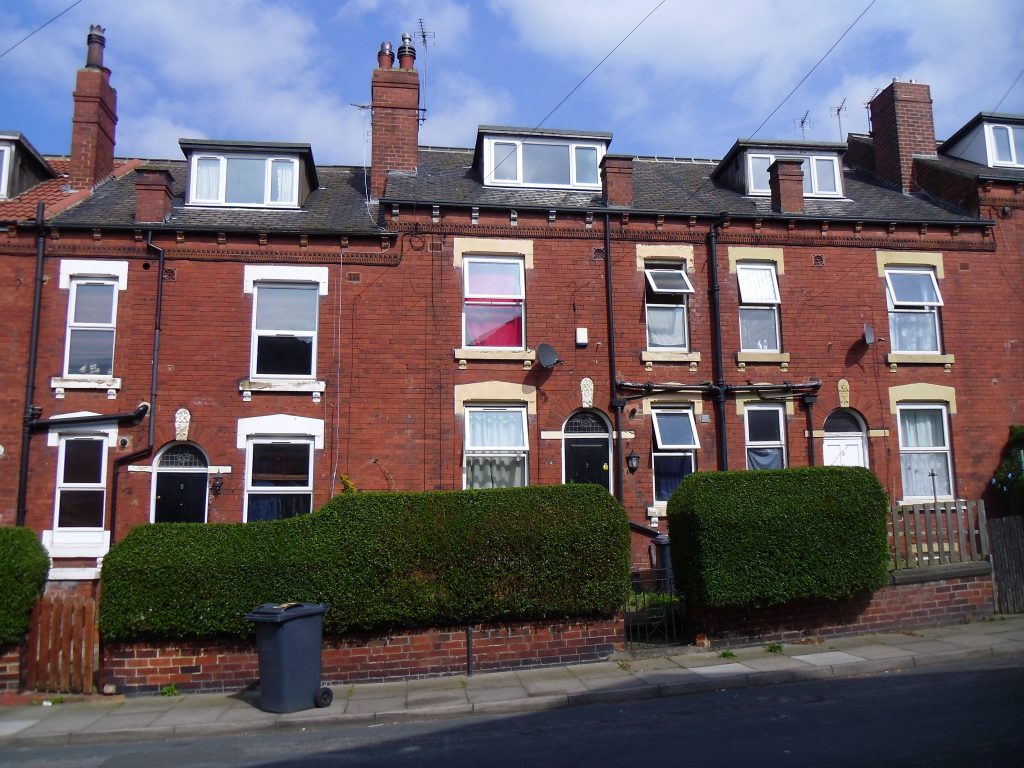Back-to-back houses, Leeds
This doctoral thesis builds on my MA research into back-to-back terraced houses in the Harehills neighbourhood of Leeds, which successfully argued that the undesignated houses have considerable heritage significance that is not recognised in policy and puts them at risk.
This research further considers their heritage significance, taking account of the value of the houses and neighbourhood to their resident communities, and explores how this can be reconciled with twenty-first century living requirements to inform their future. It does this by tracing their architectural history from 1888 to 2021, and their social history in the periods 1888 to 1920 and 2017 to 2021. Critically examining the use and meaning of the houses and neighbourhood for residents past and present brings new understandings of the value of the place, not just in terms of working-class history and heritage, but of the experiences of living in a multicultural and vibrant, yet deprived and arguably financially-neglected inner city neighbourhood. These individual and collective understandings of sense of place inform an exploration of residents’ and professionals’ aspirations for the neighbourhood’s future and of the existing policy frameworks that may facilitate transformative change, highlighting the opportunities and challenges that lie ahead.
The ethnographic approach uses a mixed methodology incorporating architectural, archaeological, historical and social science methods, cross-referencing an exceptional array of sources from archives, the built environment, participants and literature. In doing so, it pieces together the complexities of the neighbourhood’s past and present to make an entirely new contribution to knowledge, and crucially, prioritises the voices of marginalised residents. Moreover, the new knowledge can, and is already being used to initiate the changes residents want, and the scope and methodology of the research will undoubtedly be of interest to stakeholders in other historic inner-city working-class terraced areas throughout the country.
Upon completion of the PhD, I have been working with Leeds City Council’s Neighbourhood Planning team and members of the Harehills Neighbourhood Forum on a government-funded pilot project entitled ‘Simpler approach to neighbourhood planning.’ This work is ongoing and the output will be reported here when it is complete.


